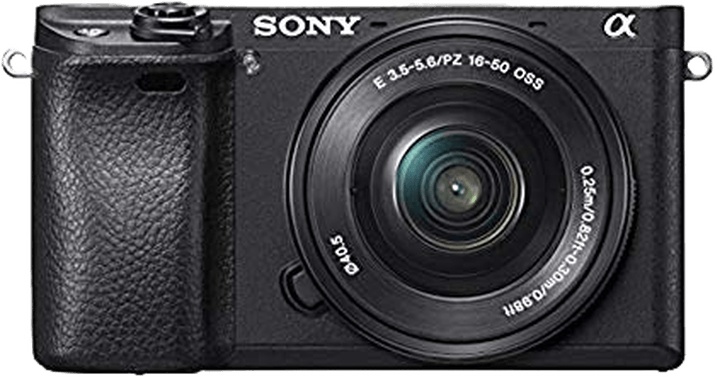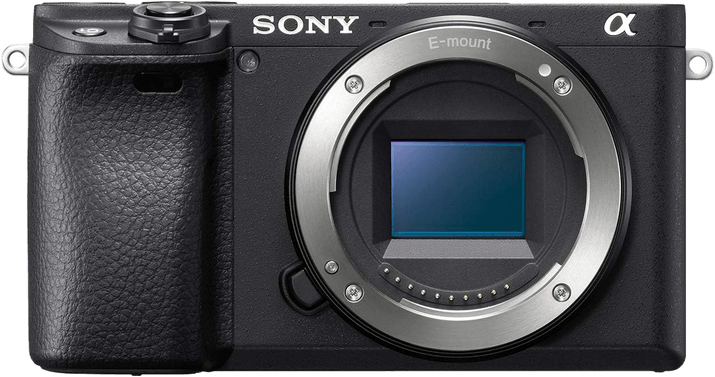Sony a6300 vs a6400 Comparison
Sony a6300

Sony a6400

The Sony a6400 emerges as the winner with a score of 70/100, while the Sony a6300 trails behind at 61/100. Both cameras are mirrorless and share similar dimensions, with the a6400 being slightly thicker at 60mm compared to the a6300’s 49mm. Their weights are nearly identical, with the a6400 weighing 403g and the a6300 at 404g.
The a6400 outshines its predecessor with a lower launch price of $900 compared to the a6300’s $1000. Additionally, the a6400 benefits from being a more recent release, hitting the market in 2019, three years after the a6300’s 2016 debut.
Despite its lower score, the a6300 has a slightly slimmer profile, which could be a minor advantage for some users. However, the Sony a6400 clearly offers better value and updated features, making it the superior choice between the two cameras.
Sony a6300 vs a6400 Overview and Optics
When comparing the optics of the Sony a6300 and Sony a6400, both cameras receive an identical score of 68/100. This indicates that these cameras have very similar optical capabilities. They share common specifications, including 24.2 megapixels, 11 fps shooting speed, a CMOS sensor type, the Bionz X processor, an APS-C sensor size, a Sony E lens mount, and a lack of image stabilization.
Despite having the same score, the Sony a6300 has a slightly higher DXOMARK sensor score of 85 compared to the Sony a6400’s 83. This means that the a6300’s sensor performs marginally better in terms of dynamic range, color depth, and low-light sensitivity, providing slightly improved image quality.
On the other hand, the Sony a6400 has no significant advantages over the a6300 in terms of optics. Both cameras share the same specifications, and the difference in the DXOMARK sensor score is small enough that it may not be noticeable in everyday shooting situations.
Considering the similar scores and specifications, it is clear that the Sony a6300 and a6400 have very comparable optical capabilities. The minor advantage in the a6300’s DXOMARK sensor score may be worth considering for those seeking the best possible image quality. However, for most users, the optics of these cameras are nearly identical, and the choice between the two would likely boil down to other factors, such as price, design, or additional features.
Sony a6300 vs a6400 Video Performance
The Sony a6300 and the Sony a6400 both have a video score of 91/100. This means that their video capabilities are comparable and neither camera is superior based on the score alone. Both cameras share key video specifications, including a maximum video resolution of 4K, maximum video dimensions of 3840 x 2160, and a maximum video frame rate of 120fps. Additionally, both cameras have built-in time-lapse functionality.
While the Sony a6300 and the Sony a6400 share the same video score, there are certain aspects where one camera may be better than the other. However, based on the provided specifications, it is difficult to determine any clear advantages for either camera in terms of video capabilities. Both cameras have the same maximum video resolution, dimensions, and frame rate, which are crucial factors when considering video quality.
In terms of video capabilities, neither the Sony a6300 nor the Sony a6400 seems to have a significant advantage over the other. Both cameras have identical video scores and share essential specifications. It is likely that other factors, such as usability, battery life, and additional features, will determine which camera is the better choice for a specific user’s needs.
To conclude, the Sony a6300 and the Sony a6400 have equal video capabilities based on their identical scores and shared specifications. Users should consider other factors when choosing between these two cameras, as their video performance appears to be on par with each other.
Sony a6300 vs a6400 Features and Benefits
The Sony a6400 emerges as the winner with a feature score of 81/100, while the Sony a6300 scores 54/100. Both cameras share several specifications, such as a 3-inch screen size, 921600-dot screen resolution, flip screen, lack of GPS, and WIFI connectivity. However, the a6400 has additional features that make it a superior choice.
The Sony a6400 outperforms the a6300 by offering a touchscreen and Bluetooth connectivity. The touchscreen allows for more convenient and intuitive control when navigating menus and adjusting settings. Bluetooth connectivity enables seamless connection to smartphones and other devices for quick image sharing and remote camera control. These features make the a6400 more versatile and user-friendly.
The Sony a6300, on the other hand, does not offer any significant advantages over the a6400. It lacks both a touchscreen and Bluetooth connectivity, limiting its ease of use and compatibility with other devices.
Considering the shared specifications and the additional features of the a6400, it is evident that the Sony a6400 is the better camera. The touchscreen and Bluetooth connectivity enhance user experience and convenience, making it a more appealing option for photographers. Meanwhile, the a6300 falls short in comparison due to its lack of these features. Therefore, the Sony a6400 proves to be the superior choice between the two cameras.
Sony a6300 vs a6400 Storage and Battery
The Sony a6400 wins in the storage and battery category with a score of 37/100, while the Sony a6300 receives a score of 24/100. Both cameras have one memory card slot and accept SD, SDHC, and SDXC cards. However, the a6400 also accepts Memory Stick Duo cards and is UHS-I compatible.
The a6400 has a slightly longer battery life, providing 410 shots compared to the a6300’s 400 shots. Both cameras use the same NP-FW50 battery type. The a6400 offers the added convenience of USB charging, which the a6300 lacks.
The a6300 does not have any advantages in the storage and battery department compared to the a6400. Therefore, the Sony a6400 is the better choice for users who require more versatile storage options and longer battery life with the convenience of USB charging.
Sony a6300 vs a6400 Alternatives
Still not sure which camera is best for you? Check out some other popular camera comparisons for inspiration:
